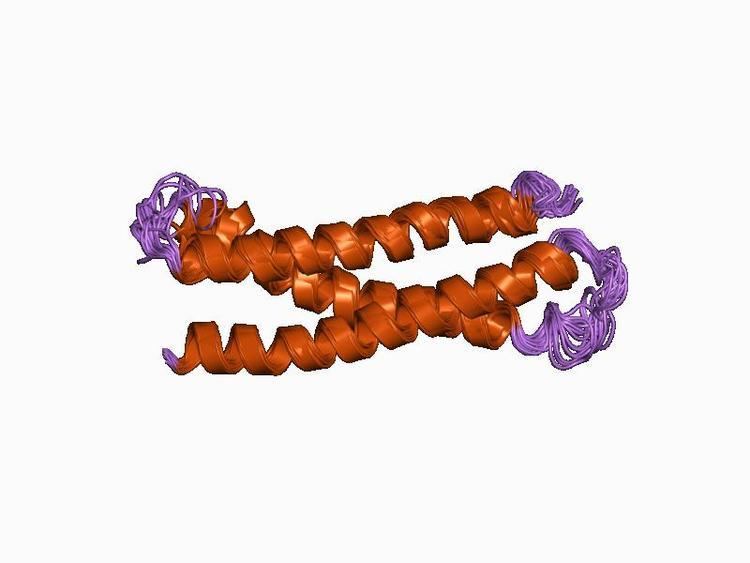Symbol Syntaxin InterPro IPR006011 SCOP 1br0 | Pfam PF00804 SMART SM00503 SUPERFAMILY 1br0 | |
 | ||
Syntaxins are a family of membrane integrated Q-SNARE proteins participating in exocytosis.
Contents
Domains
Syntaxins possess a single C-terminal transmembrane domain, a SNARE domain (known as H3), and an N-terminal regulatory domain (Habc). Syntaxin 17 may have two transmembrane domains.
Function
In vitro syntaxin per se is sufficient to drive spontaneous calcium independent fusion of synaptic vesicles containing v-SNAREs.
More recent and somewhat controversial amperometric data suggest that the transmembrane domain of Syntaxin1A may form part of the fusion pore of exocytosis.
Binding
Syntaxins bind synaptotagmin in a calcium-dependent fashion and interact with voltage dependent calcium and potassium channels via the C-terminal H3 domain. Direct syntaxin-channel interaction is a suitable molecular mechanism for proximity between the fusion machinery and the gates of Ca2+ entry during depolarization of the presynaptic axonal boutons.
The Sec1/Munc18 protein family is known to bind to Syntaxin and regulate Syntaxins machinery. Munc18-1 binds to Syntaxin 1A via two distinct sites referred as N-terminus binding and "closed" conformation that incorporates both the central Habc domain and the SNARE core domain. Munc18-1 binding to the N-terminus of Syntaxin-1 is thought to facilitate Syntaxin-1 interaction with another SNARE, while binding to the "closed" conformation of Syntaxin-1 is believed to be inhibitory.
Recently published data show that alternative spliced Syntaxin 1 (STX1B) which lacks the transmembrane domain localizes in the nuclei.
Genes
Human genes encoding syntaxin proteins include:
